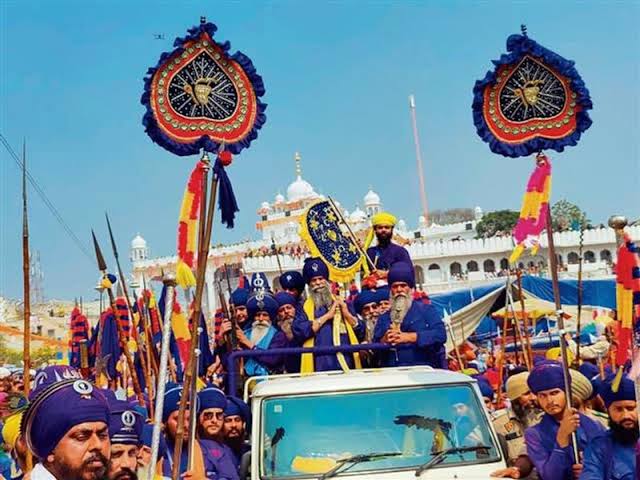Anandpur Sahib, Punjab — Every year, thousands of Sikhs from across the world gather at Anandpur Sahib to witness the breathtaking spectacle of Hola Mohalla. This festival, marked by impressive martial displays and deep spiritual devotion, traces its roots to a period of conflict and resilience in Sikh history. But what inspired Guru Gobind Singh to create this extraordinary tradition? The story behind Hola Mohalla is as powerful as the festival itself.
A Tradition Born from Resistance
The origins of Hola Mohalla lie in one of the most turbulent periods of Sikh history. By the late 1600s, the Mughal Empire, under the rule of Aurangzeb, had intensified its efforts to suppress Sikhism. The turning point came in 1675 when Guru Tegh Bahadur, the ninth Sikh Guru, was executed for defending the religious freedom of Hindus. His martyrdom left the Sikh community in a vulnerable state, facing both religious and political pressure.
Guru Gobind Singh, his young successor, recognized the need to unite and empower his followers — not just spiritually but also militarily. In 1699, he founded the Khalsa, a brotherhood of baptized Sikhs committed to defending justice and truth. But Guru Gobind Singh knew that spiritual strength alone wasn’t enough. Sikhs needed to be prepared for battle.
In 1701, a day after the Hindu festival of Holi, Guru Gobind Singh organized the first Hola Mohalla at Anandpur Sahib. But unlike Holi, which is known for playful color-throwing, Hola Mohalla was designed as a serious display of martial skill and discipline. The word “Hola” is the masculine form of Holi, while “Mohalla” refers to an organized military procession.
Martial Displays and Spiritual Strength
From the very beginning, Hola Mohalla was a platform to train and inspire Sikhs in the art of warfare. Guru Gobind Singh led his followers through mock battles, teaching them strategic formations and combat skills. Traditional Sikh warriors, known as Nihangs, became the heart of the festival. Dressed in distinctive blue robes and armed with swords, spears, and daggers, the Nihangs performed daring feats of martial arts, horseback riding, and swordplay.
To this day, the Nihangs remain central to Hola Mohalla. Their displays of gatka (a Sikh martial art), horse stunts, and hand-to-hand combat are not only thrilling to watch but also serve as a reminder of the Sikh community’s warrior heritage.
But Hola Mohalla isn’t just about martial strength. The festival is deeply spiritual. Sikhs gather for kirtan (devotional singing), prayers, and the recitation of Sikh scriptures. The community spirit is reflected in the langar — the free kitchen where volunteers prepare and serve food to thousands of visitors, regardless of caste, creed, or social status. The tradition of langar reflects Sikhism’s core values of equality and selfless service.
A Global Gathering of Sikhs
The festival lasts for three days, with Anandpur Sahib transforming into a vibrant hub of activity. Colorful processions wind through the streets, led by the Nihangs on horseback. Sikhs from across the globe join the celebrations, chanting hymns and participating in martial drills. The energy is palpable — the rhythmic beating of drums, the clash of swords, and the chants of “Waheguru Ji Ka Khalsa, Waheguru Ji Ki Fateh” (The Khalsa belongs to God, Victory belongs to God) fill the air.
Hola Mohalla is more than just a festival; it’s a living symbol of Sikh resilience and unity. It reminds Sikhs of their duty to stand against injustice and protect the oppressed, while staying rooted in their spiritual identity.
The Legacy of Hola Mohalla
What began as a strategic initiative by Guru Gobind Singh has become a powerful reminder of Sikh strength and values. Hola Mohalla reinforces the idea that true power lies in the balance of courage and compassion, of martial strength and spiritual devotion.
For Sikhs, Hola Mohalla is not just about remembering history — it’s about carrying forward the legacy of Guru Gobind Singh and the Khalsa in modern times. The festival stands as a testament to the Sikh spirit of Chardi Kala — rising above adversity with optimism and grace.

